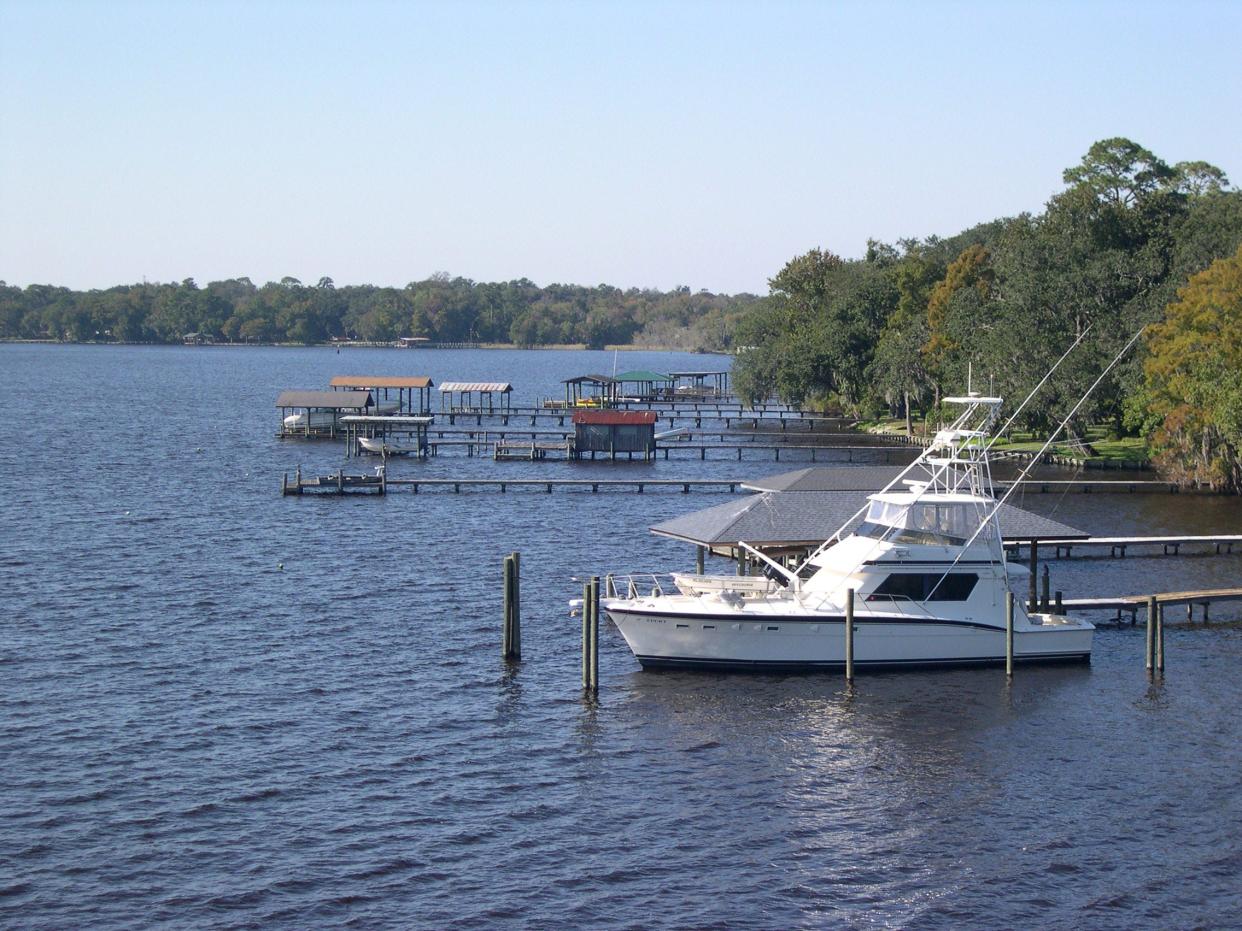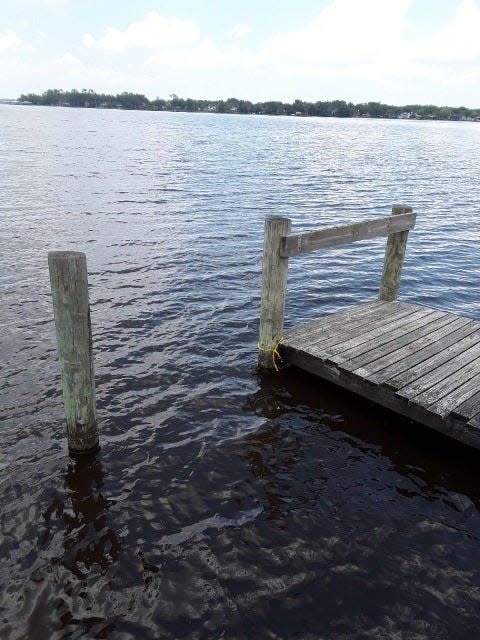Avoid algae blooms, Clay health alert says after modest toxin levels found in Doctors Lake

Clay County health officials are cautioning people to avoid algae blooms after water testing found toxins in a sample from the Mill Cove area of Doctors Lake.
The sample contained levels of microcystin toxins far below a U.S. Environmental Protection Agency safety threshold, but an environmental advocate said toxin levels in algae can change day by day, faster than agencies can measure.
“You need to avoid blooms altogether,” said St. Johns Riverkeeper Executive Director Jimmy Orth. “There is no real-time system that warns you, ‘hey, this is a toxic bloom’.”
Foaming at the river: Should Jacksonville residents be concerned?
Algae in St. Johns River: Jacksonville weighs pilot project to filter city's drainage
Sensitivity varies from person to person, but algae exposure can cause rashes, stomach cramps, nausea, diarrhea and vomiting, the Florida Department of Health has reported. In some cases, the agency said, high levels of toxin exposures can affect the liver and nervous system.
Algae blooms have happened regularly on Doctors Lake for decades, and Orth said his organization has received reports this week about significant blooms around Palatka and Fruit Cove as well.

An example of toxin buildup was found at Doctors Lake in 2018, when one sample showed a microcystin concentration of 41 micrograms per liter of water, about five times the 8-microgram safety threshold EPA recommended in 2019. In 2013, Riverkeeper reported readings as high as 2,000 micrograms from samples collected near the river’s shoreline at Jacksonville University.
By contrast, a test by Florida’s Department of Environmental Protection last week showed only 0.49 micrograms of microcystin in the waterbody’s Mill Cove area, but Orth said differences in the way samples are collected can have big impacts on the results.
DEP regularly tests about one foot below the water’s surface, often a distance from shore, while Riverkeeper tests at the surface and close to shore, where algae residue can build up and can be easily touched by people or pets.
An alert issued Tuesday by the Department of Health in Clay County urged people not to swim, wade or boat in water where a bloom is visible, not to drink the water, and to wash their skin and clothing with soap and water if they came in contact with blooms. The agency advised not eating shellfish from water with blooms but said fillets from healthy fish should be safe if they’re rinsed in tap water and cooked well.

Algae produce toxins at specific stages in their life cycle, creating the possibility for blooms to be harmless one day and hazardous on another day.
A Clay health official didn’t respond to questions about the agency’s alert.
Orth said Duval County health officials began issuing alerts last year any time microcystin was found in sampling and said Clay County may be following the same route. He praised that change and said Riverkeeper had been frustrated years ago by health departments’ silence during blooms that river advocates considered potentially dangerous.
He said he hoped other health agencies in the St. Johns’ lower basin, from the river’s mouth at Mayport upstream roughly to Lake George, would follow that example.
This article originally appeared on Florida Times-Union: Modest toxin buildup prompts algae alert in Clay County's Doctors Lake

